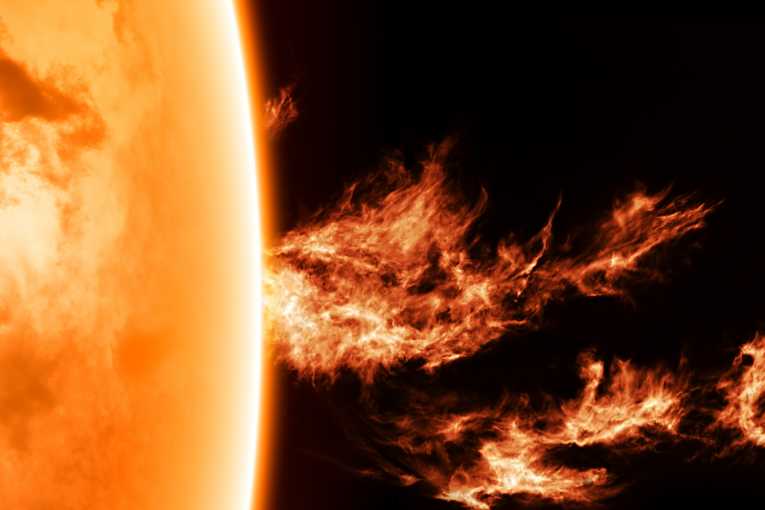The Sun is heading for a period of decreased activity say scientists who have been stirred by reaction to their research to issue a statement denying that they are predicting global cooling as a result.
The team from the National Solar Observatory (NSO) and the Air Force Research Laboratory (AFRL) say that a current high level of activity, including sunspots, looks likely to be the last for a while.
The Sun's activity runs in cycles of around 11 years and we are coming to the end of Cycle 24, with Cycle 25 about to begin - if it does.
"This is highly unusual and unexpected," Dr. Frank Hill, associate director of the NSO's Solar Synoptic Network, said of the results. "But the fact that three completely different views of the Sun point in the same direction is a powerful indicator that the sunspot cycle may be going into hibernation."In the period 1645 to 1715, very little sunspot activity was observed, and scientists are asking if we are about to enter another so-called Maunder Minimum, which fell during a so-called mini-ice age of very cold winters in Europe and north America.
"We expected to see the start of the zonal flow for Cycle 25 by now," Hill explained, "but we see no sign of it. This indicates that the start of Cycle 25 may be delayed to 2021 or 2022, or may not happen at all."
"If we are right," Hill concluded, "this could be the last solar maximum we'll see for a few decades. That would affect everything from space exploration to Earth's climate."
However, such has the stir that the story has caused; Hill has issued a further statement, saying:
"We are NOT predicting a mini-ice age. We are predicting the behaviour of the solar cycle. In my opinion, it is a huge leap from that to an abrupt global cooling, since the connections between solar activity and climate are still very poorly understood. My understanding is that current calculations suggest only a 0.3 degree C decrease from a Maunder-like minimum, too small for an ice age. It is unfortunate that the global warming/cooling studies have become so politically polarizing."
Top Image Credit: © Ig0rZh










